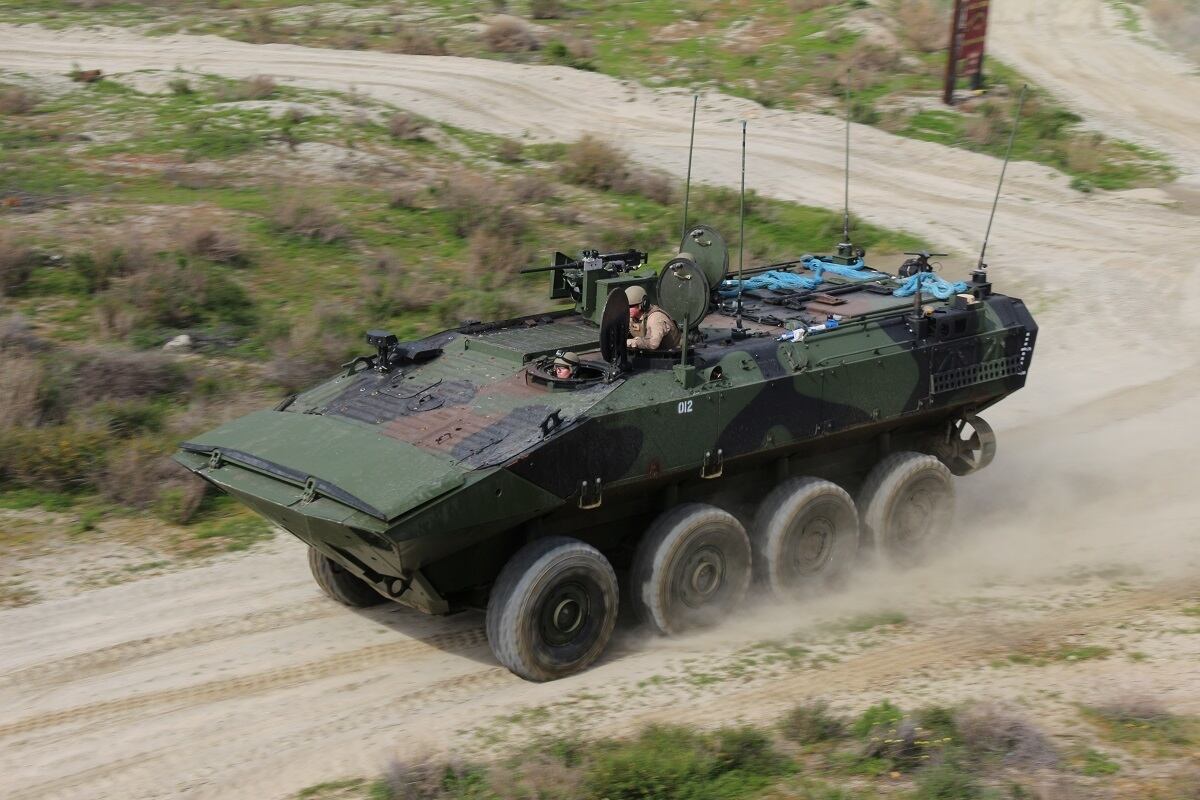The outgoing Marine Corps commandant said that the current relocation of Marines from Okinawa to Guam needs to be reviewed.
Gen. Robert B. Neller was responding to questions from Sen. Brian Schatz, D-Hawaii, during a Senate Appropriations committee hearing Wednesday.
Near the end of the nearly two-hour hearing on Navy and Marine Corps budgets, Schatz lodged his questions on Guam and the practicality of the long-planned and debated move.
“What’s your personal view?,” Schatz said. “Does this make sense still?”
Neller paused.
“The plan, as it’s currently designed, I think is worthy, possibly, of a review,” Neller said. “That is my personal and professional opinion.”
RELATED

The problem that Schatz had zeroed in on with his short question period was how the Marines are going to get from Guam to where the fighting is taking place.
Neller said he recently had discussed lift concerns with the chief of naval operations. He said options include high speed vessels in the area to move Marines and gear, but that would not work for a substantial force.
For that, Marines would need strategic lift.
“Which is available, you’d have to resources it and pay for it or you’d have to have ampibs come from either Japan or the U.S. mainland or you would have to contract for it,” Neller said.
The Marines’ own report, the DPRI, noted in its conclusions that, “Further distribution of the force exacerbates a shortfall in Navy amphibious shipping and dedicated sea surface lift capacity.”
And that sustaining Guam is a “significant bill which mush be addressed and balanced across other DoD priorities.”
Schatz’s overall questions looked to outline what’s going on with the Guam move.
“Where are we with moving Marines to Guam? Where are we with lift? Where are we with training facilities?” Schatz asked.
Neller told the senator that the current Defense Policy Review Initiative plan was in place and though behind schedule, contracts for construction were being awarded to continue the build.
He stressed that he and past Marine Corps leadership was “content” with the move if the quality of life, training options and sealift/airlift capabilities were in place to get Marines from Guam to the Pacific fight.
The Marine Corps has long faced pressure from Okinawa residents and political leaders to reduce or remove their facilities from the island, captured by U.S. forces during World War II.
To maintain a presence in the Pacific region, Marines have come up with a plan to reduce the footprint, returning more than two-thirds of the land occupied by Marines to the Okinawans. In the process they will also draw down troops on the island by nearly half, from the current 20,600 to 11,500.
Those Marines will be redistributed to Darwin, Australia, Hawaii, mainland United States and Guam, according to the most recent version of the DPRI, which was obtained by Marine Corps Times through a records request.
The plan calls for 1,300 to go to Darwin, 2,700 to Hawaii and 4,100 to Guam. An additional 1,200 global source Marines from mainland United States will be added to Darwin numbers as will another 600 to Guam.
Current plans expect Marines to begin arriving in Guam by 2024, with 2,500 there by 2026 and the full 5,000-Marine force to be in place by 2028.
That will include a Marine Expeditionary Brigade command element, an infantry regiment, combat logistics battalion and air combat element to fill out a Marine Air Ground Task Force unit for the island.
As of March, nine construction-related projects had been completed with a dozen under construction, more than 30 in development stages with contract awards expected in the next two years and another 50 projects in planning beyond that timeline, according to the DPRI.
But along the way the Marine Corps has faced lawsuits challenging the environmental protections of base and training sites as well as delays when construction has uncovered cultural or historical artifacts.
The ultimate goal is to have a base on Guam with training areas on Tinian and Pagan, separate islands in the Northern Marianas.
Back on Okinawa, all kinds of moves are being made as the Marine forces shrink their footprint.
The major work is being done on the Futenma replacement facility which as a dozen major construction efforts to conclude before it can be fully operational. Half of those are scheduled to be done this year. Three more should finish next year and the remaining three projects should end by or before 2025.
The first phase is 93 percent complete, which transformed more than three quarters of the installation.
Pieces of installations are being shuffled around the island. Camp Kinser staff and equipment will be distributed to Kadena Air Force Base, the Army’s Tori Station, and Camps Hansen and Foster.
But parts of Foster will go to Tori Station, an industrial park and Camps Courtney and Schwab.
Bits of Futenma will head to Schwab, Iwakuni, Guam and Hawaii.
Hawaii will absorb not only 2,700 more Marines at its main base, Oahu and Kalaeloa but also take on 2,700 dependents.
Todd South has written about crime, courts, government and the military for multiple publications since 2004 and was named a 2014 Pulitzer finalist for a co-written project on witness intimidation. Todd is a Marine veteran of the Iraq War.





